Princeton's Computer Science Professor, Ed Felten, Begins to Look at the Failed Jennings/Buchanan U.S. House Race in Florida, But Seems to Buy Into a Flawed Theory and Solution
'Paper Trails' on Sarasota's Voting Machines Would Have Made the Situation Worse, Not Better...
Blogged by Brad Friedman from on the road...
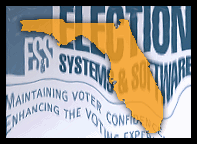 To be clear, despite the headline, we don't mean to call Princeton's computer science professor Ed Felten "stupid" by any means. We do, however, mean to make clear --- in no uncertain terms --- that the oft-floated idea that adding so-called "paper trails" to failed, paperless ES&S touch-screen voting machines, such as those used in last November's U.S. House race in Sarasota between Christine Jennings (D) and Vern Buchanan (R), would not have avoided the situation we're now in. In fact, such "Voter Verified Paper Audit Trails" (VVPAT) added to Direct Recording Electronic (DRE/touch-screen) systems would likely make our current crisis of democracy worse instead of better.
To be clear, despite the headline, we don't mean to call Princeton's computer science professor Ed Felten "stupid" by any means. We do, however, mean to make clear --- in no uncertain terms --- that the oft-floated idea that adding so-called "paper trails" to failed, paperless ES&S touch-screen voting machines, such as those used in last November's U.S. House race in Sarasota between Christine Jennings (D) and Vern Buchanan (R), would not have avoided the situation we're now in. In fact, such "Voter Verified Paper Audit Trails" (VVPAT) added to Direct Recording Electronic (DRE/touch-screen) systems would likely make our current crisis of democracy worse instead of better.
As we've said before, DREs with or without a VVPAT are a threat to democracy. VVPATs are little more than a band-aid at best, and more likely serve only as a panacea to offer a false sense of security.
Adding a "paper trail" to a DRE/touch-screen system is like requiring a seat belt in a Ford Pinto; what good will the seat belts do when the Pinto explodes?
Today then, Princeton's Felten (he of the infamous Diebold Touch-Screen Virus Hack) has posted an article on his blog looking at what may have happened in the contested U.S. House race in Florida's 13th Congressional District between Jennings and Buchanan, in which some 18,000 votes seem to have disappeared completely on the paperless ES&S touch-screen voting machines. Just 369 votes separate the two candidates in the flawed state-certified final results.
In his essay, the first of a promised series to come this week, Felten correctly points out that the situation can only be attributed to problems with the ES&S voting machines themselves, since the undervote rate for the very same race in the very same county was a reasonable 2.5% on the paper absentee ballots, but jumped nearly 15% as recorded on the ES&S touch-screen machines.
Even ES&S's only expert witness so far to take the stand --- Dartmouth College's political (not computer) scientist, Michael Herron --- in the election contest down in Florida admitted that were it not for problems voters encountered in using those voting machines, Jennings likely would have been named the winner. That point was reported by Sarasota Herald Tribune who reported on the testimony this way: "Had those ballots been cast without problems, Jennings would have won by as many as 3,000 votes, according to the ES&S expert's statistical 'best guess.'" Reporting from both Wired News and our own discussions just after the testimony with Lowell Finley, the attorney for VoterAction.org, one of several non-partisan groups who argued the case on behalf of the Florida voter plaintiffs who joined Christine Jennings in filing an election contest, confirmed that point as well.
So the question --- for those legitimately trying to figure out what went wrong, as opposed to Buchanan and his supporters who simply want to claim the House seat as their own, even if it's an aberration of democracy --- is whether the problem was due to bad ballot design, machine malfunction, or, most likely, some combination of both. With just 369 votes between the two candidates in the state-certified final result (which is being challenged in both Florida courts and the U.S. House), virtually every analysis has determined that even a minor machine malfunction would likely have thrown the race to the Republican in the Democrat's strongest areas in Sarasota. That's where the largest undervote rates occured.
 Felten's thesis, however, as he begins to discuss today in his first article on the topic, would seem to suggest --- incorrectly, in our view --- that a "paper trail" on those paperless touch-screens would have avoided this problem. We'll answer by suggesting it would only have made it worse.
Felten's thesis, however, as he begins to discuss today in his first article on the topic, would seem to suggest --- incorrectly, in our view --- that a "paper trail" on those paperless touch-screens would have avoided this problem. We'll answer by suggesting it would only have made it worse.
In the meantime, an as-yet under-reported affidavit obtained by The BRAD BLOG from a poll worker, which accompanied a complaint filed by a Republican (yep, you read that right) in Sarasota who believes machine malfunction was clearly the culprit, seems to demonstrate clearly that a problem with the ES&S iVotronic system, not a problem finding the race on the ballot, was to blame for the massive undervote rate.
Couple that with two excellent reports from Daniel Hopsicker as filed last week (one here, the second here) analyzing, in crystal-clear detail, a number of contemporaneous news reports from Sarasota before, during, and after the election, it becomes very clear that machine failure was the problem in the FL-13 election and not "bad ballot design" --- the favored theory of folks hoping to keep the "provisionally seated" Buchanan in power.
Hopsicker's excellent review of those news reports, both as the problem was first emerging and just after the election, when voters' and poll workers' recollections were still fresh, reveals that voter and poll worker complaints at that time overwhelmingly focused on problems voters had casting their votes in particular races and not on problems finding particular races on the ballots!
We'll take a look at the complaint filed by the Republican mentioned above, along with the poll-worker affidavit, in a future report this week. But for now, we'll look at Felten's "Paper Trails Would Have Avoided the Problem" theory.
As Felten averred today...
--- Click here for REST OF STORY!... ---


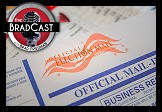 The GOP 'Voter Fraud'
The GOP 'Voter Fraud' 'Green News Report' 10/31/24
'Green News Report' 10/31/24
 'Closing Arguments'
'Closing Arguments' Trump Promises to be a Lawless, Authoritarian President. Believe Him: 'BradCast' 10/29/24
Trump Promises to be a Lawless, Authoritarian President. Believe Him: 'BradCast' 10/29/24 'Green News Report' 10/29/24
'Green News Report' 10/29/24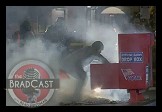 Election Heats Up: Ballots Burn, Billionaires 'Obey in Advance', Callers Ring In: 'BradCast' 10/28/24
Election Heats Up: Ballots Burn, Billionaires 'Obey in Advance', Callers Ring In: 'BradCast' 10/28/24 Musk's Privatized Internet Satellite System Threatens U.S. National Security
Musk's Privatized Internet Satellite System Threatens U.S. National Security Sunday 'VOTE NOW!' Toons
Sunday 'VOTE NOW!' Toons Harris on Hope, Trump's Fasc-ism in Bumpy Closing Days: 'BradCast' 10/24/24
Harris on Hope, Trump's Fasc-ism in Bumpy Closing Days: 'BradCast' 10/24/24 'Green News Report' 10/24/24
'Green News Report' 10/24/24 Kelly on Trump: 'Fascist', Admires Hitler, Disrespects Constitution and Disabled Vets: 'BradCast' 10/23/24
Kelly on Trump: 'Fascist', Admires Hitler, Disrespects Constitution and Disabled Vets: 'BradCast' 10/23/24 Accountability Comes For Rudy, Other Election Deniers: 'BradCast' 10/22/24
Accountability Comes For Rudy, Other Election Deniers: 'BradCast' 10/22/24 'Green News Report' 10/22/24
'Green News Report' 10/22/24 Elon Musk's 'Vote Buying' and Lying for Trump: 'BradCast' 10/21/24
Elon Musk's 'Vote Buying' and Lying for Trump: 'BradCast' 10/21/24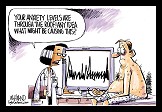 Sunday 'High Anxiety' Toons
Sunday 'High Anxiety' Toons 'Green News Report' 10/17/24
'Green News Report' 10/17/24 Fake v. Real Censorship and Trump/Fox Fetish-ized Grievance World: 'BradCast' 10/17/24
Fake v. Real Censorship and Trump/Fox Fetish-ized Grievance World: 'BradCast' 10/17/24 'Americans Aren't Prepared for Trump's Police State': 'BradCast' 10/16/24
'Americans Aren't Prepared for Trump's Police State': 'BradCast' 10/16/24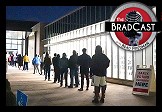 Good News for Georgia Voters, the Economy and Kamala Harris: 'BradCast' 10/15/24
Good News for Georgia Voters, the Economy and Kamala Harris: 'BradCast' 10/15/24 Fascism Comes to America: 'BradCast' 10/14/24
Fascism Comes to America: 'BradCast' 10/14/24 Institutional Landlords Flood CA Voters With Deceptive Ads on Props 33 and 34
Institutional Landlords Flood CA Voters With Deceptive Ads on Props 33 and 34 Milton's Mess, FL's U.S. House Liars, Trump's Made-in-China Bibles: 'BradCast' 10/10/24
Milton's Mess, FL's U.S. House Liars, Trump's Made-in-China Bibles: 'BradCast' 10/10/24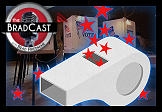 Whistleblower Org Readies to Support Election Officials: 'BradCast' 10/9/24
Whistleblower Org Readies to Support Election Officials: 'BradCast' 10/9/24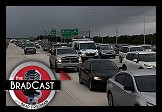 Florida Braces for 'Devastating to Catastrophic' Milton: 'BradCast' 10/8/24
Florida Braces for 'Devastating to Catastrophic' Milton: 'BradCast' 10/8/24
 VA GOP VOTER REG FRAUDSTER OFF HOOK
VA GOP VOTER REG FRAUDSTER OFF HOOK Criminal GOP Voter Registration Fraud Probe Expanding in VA
Criminal GOP Voter Registration Fraud Probe Expanding in VA DOJ PROBE SOUGHT AFTER VA ARREST
DOJ PROBE SOUGHT AFTER VA ARREST Arrest in VA: GOP Voter Reg Scandal Widens
Arrest in VA: GOP Voter Reg Scandal Widens ALL TOGETHER: ROVE, SPROUL, KOCHS, RNC
ALL TOGETHER: ROVE, SPROUL, KOCHS, RNC LATimes: RNC's 'Fired' Sproul Working for Repubs in 'as Many as 30 States'
LATimes: RNC's 'Fired' Sproul Working for Repubs in 'as Many as 30 States' 'Fired' Sproul Group 'Cloned', Still Working for Republicans in At Least 10 States
'Fired' Sproul Group 'Cloned', Still Working for Republicans in At Least 10 States FINALLY: FOX ON GOP REG FRAUD SCANDAL
FINALLY: FOX ON GOP REG FRAUD SCANDAL COLORADO FOLLOWS FLORIDA WITH GOP CRIMINAL INVESTIGATION
COLORADO FOLLOWS FLORIDA WITH GOP CRIMINAL INVESTIGATION CRIMINAL PROBE LAUNCHED INTO GOP VOTER REGISTRATION FRAUD SCANDAL IN FL
CRIMINAL PROBE LAUNCHED INTO GOP VOTER REGISTRATION FRAUD SCANDAL IN FL Brad Breaks PA Photo ID & GOP Registration Fraud Scandal News on Hartmann TV
Brad Breaks PA Photo ID & GOP Registration Fraud Scandal News on Hartmann TV  CAUGHT ON TAPE: COORDINATED NATIONWIDE GOP VOTER REG SCAM
CAUGHT ON TAPE: COORDINATED NATIONWIDE GOP VOTER REG SCAM CRIMINAL ELECTION FRAUD COMPLAINT FILED AGAINST GOP 'FRAUD' FIRM
CRIMINAL ELECTION FRAUD COMPLAINT FILED AGAINST GOP 'FRAUD' FIRM RICK SCOTT GETS ROLLED IN GOP REGISTRATION FRAUD SCANDAL
RICK SCOTT GETS ROLLED IN GOP REGISTRATION FRAUD SCANDAL VIDEO: Brad Breaks GOP Reg Fraud Scandal on Hartmann TV
VIDEO: Brad Breaks GOP Reg Fraud Scandal on Hartmann TV RNC FIRES NATIONAL VOTER REGISTRATION FIRM FOR FRAUD
RNC FIRES NATIONAL VOTER REGISTRATION FIRM FOR FRAUD EXCLUSIVE: Intvw w/ FL Official Who First Discovered GOP Reg Fraud
EXCLUSIVE: Intvw w/ FL Official Who First Discovered GOP Reg Fraud GOP REGISTRATION FRAUD FOUND IN FL
GOP REGISTRATION FRAUD FOUND IN FL

























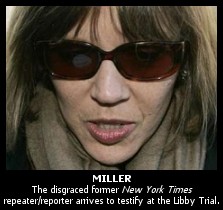 ...And the rest is history. Or at least current history as it is unspooling in Courtroom 16 of the Prettyman Courthouse in D.C., in the Perjury Trial of I. Lewis "Scooter" Libby.
...And the rest is history. Or at least current history as it is unspooling in Courtroom 16 of the Prettyman Courthouse in D.C., in the Perjury Trial of I. Lewis "Scooter" Libby. To be clear, despite the headline, we don't mean to call Princeton's computer science professor Ed Felten "stupid" by any means. We do, however, mean to make clear --- in no uncertain terms --- that the oft-floated idea that adding so-called "paper trails" to failed, paperless ES&S touch-screen voting machines, such as those used in last November's U.S. House race in Sarasota between Christine Jennings (D) and Vern Buchanan (R), would not have avoided the situation we're now in. In fact, such "Voter Verified Paper Audit Trails" (VVPAT) added to Direct Recording Electronic (DRE/touch-screen) systems would likely make our current crisis of democracy worse instead of better.
To be clear, despite the headline, we don't mean to call Princeton's computer science professor Ed Felten "stupid" by any means. We do, however, mean to make clear --- in no uncertain terms --- that the oft-floated idea that adding so-called "paper trails" to failed, paperless ES&S touch-screen voting machines, such as those used in last November's U.S. House race in Sarasota between Christine Jennings (D) and Vern Buchanan (R), would not have avoided the situation we're now in. In fact, such "Voter Verified Paper Audit Trails" (VVPAT) added to Direct Recording Electronic (DRE/touch-screen) systems would likely make our current crisis of democracy worse instead of better. Felten's thesis, however, as he begins to discuss today in his first article on the topic, would seem to suggest --- incorrectly, in our view --- that a "paper trail" on those paperless touch-screens would have avoided this problem. We'll answer by suggesting it would only have made it worse.
Felten's thesis, however, as he begins to discuss today in his first article on the topic, would seem to suggest --- incorrectly, in our view --- that a "paper trail" on those paperless touch-screens would have avoided this problem. We'll answer by suggesting it would only have made it worse.

 This week marked
This week marked 








 On Thursday
On Thursday  A startling detail emerged from testimony Wednesday in U.S. v. Libby: the CIA briefer for Vice President Richard Cheney and Lewis Libby, Cheney’s chief of staff, kept each Table of Contents from his briefing binders when he sent the contents of the binders to shredder and burn bag. CIA manager Craig Schmall testified, matter-of-factly, in response to defense attorney questioning about those informative subject headings: “They still exist.”
A startling detail emerged from testimony Wednesday in U.S. v. Libby: the CIA briefer for Vice President Richard Cheney and Lewis Libby, Cheney’s chief of staff, kept each Table of Contents from his briefing binders when he sent the contents of the binders to shredder and burn bag. CIA manager Craig Schmall testified, matter-of-factly, in response to defense attorney questioning about those informative subject headings: “They still exist.”













